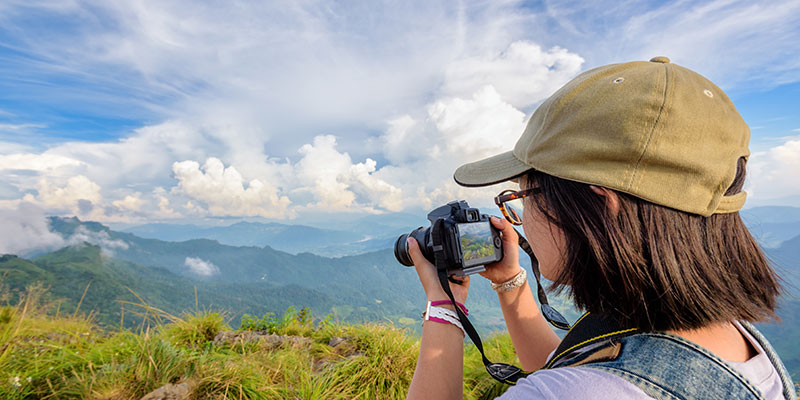Some parents feel like they’re in a constant battle to pull their kids away from technology and into nature. They want their kids to explore the world around them without distractions from games, texts, and social apps.
However, technology doesn’t have to be the enemy of the outdoors. It’s possible to use smartphones and other gadgets to plug into nature. Here are a few creative activities families can try.
Turn Nature Walks Into Adventure Hikes or Treasure Hunts
One way to connect kids with nature is to use smartphones to make normal outdoor activities more exciting.
For example, Yonder is a great app for heavy social media users. Families can share photos of hikes they go on and report on trails. Even better, family groups can follow each other and even set up hiking playdates to explore the natural world together.
Hunt for Hidden Treasure
Another way to spice up your hike is to take your kids Geocaching. Thousands of people across the world contribute to geocaches, or little containers hidden in nature. Using the GPS tools on the app, you and your child can find local geocaches, record your find, and return the cache to its original place. The app developers call their creation the “World’s Largest Treasure Hunt” with caches coming in all sizes and made up of a wide variety of items.
While it’s not necessarily an outdoor app, Monkey Spot Scavenger Hunts by Monkey Bar Collective encourages kids to complete checklists wherever they are, from spotting a unique flower to finding a gross bug. This is an easier alternative for kids who are too young for geocaching.
Create Compass Games and Challenges
Sometimes connecting with technology in nature is as easy as downloading a compass app on your phone. Not a Clue Adventures has a list of compass games for families to improve their navigation skills. For example, you could create a treasure map on your own with compass instructions for kids to find their way.
Get Involved in Citizen Science Campaigns
Parents and kids can also get involved in nationwide crowdsourced research campaigns, often referred to as “citizen science.”
“Citizen Science is a way for anyone of any age or ability level to participate in data collection for real science about the natural world,” Betsy Escandon at Eco-Novice writes. She has found citizen science projects to be a meaningful way to interest her kids in nature. Just by going for a walk with their smartphones, she and her family can help researchers collect data and preserve key species.
A few places that parents can start with these global citizen science projects include:
- GLOBE at Night teaches users about different constellations and asks them to report what stars they can see. This alerts scientists to high concentrations of light pollution and helps them identify the source.
- Marine Debris Tracker was developed by the University of Georgia to help citizens report debris or litter throughout the world. Simply by taking a walk, families can alert authorities to trash-filled areas and inspire local clean-ups.
- eBird encourages hikers to register where they walked, when, and what birds they saw. Users run through a checklist of local birds to document how common they are. Ornithologists can use this data to monitor bird populations across the country.
In some cases, getting involved in citizen science is similar to playing Pokémon Go in real life. Instead of catching digital animals, your family is able to photograph and record local species, invasive animals and environmental changes.
Look for Apps With Physical Activity Challenges
If you’re hoping to bring your kid outside to get them moving, consider looking into kid-friendly exercise apps that turn working out in nature into an interactive challenge. A few examples include:
- GeoPalz is similar to other pet care apps, except that kids actually have to take their pets on walks to keep them moving. Kids wear little activity trackers on their shoes that determine whether their pets have had a healthy amount of exercise or not that day.
- The Zombies, Run! app is a great option for older kids. There are 200 challenges where the instructor narrates a story about a runner escaping from zombies. When zombies are chasing you, you have to run fast to beat them. This also helps you earn supplies and advance in the game.
Downloading apps like MapMyHike or MapMyWalk can make getting outside more exciting when kids see how far they’ve gone. Plus, parents can use this data to create math problems based on the walks.
Use Technology to Create Nature-Inspired Art
Artistic kids can combine technology and nature to create something new — all they need is a camera.
Robin Long and Marilyn Fenster explained their Kids Afield photography project on the Natural Start Alliance blog. Kids go outside and photograph nature, giving them time to learn about the world and capture what is significant to them.
Long and Fenster chose photography as their medium for many reasons. Among them, handling a camera gives children responsibility they might not always have at a young age; and photography clearly combines art and STEM concepts.
Another way for kids to embrace their artistic side in nature is through the social painted rocks movement in America. Sara Lindberg shares her rock painting experience on Parentmap. Kids paint rocks and hide them around town, and then explore their community looking for rocks other people left. These rocks are then shared in social media groups as finders and hiders compare notes. All this craft needs is some non-toxic, craft store paint and a few rocks!









